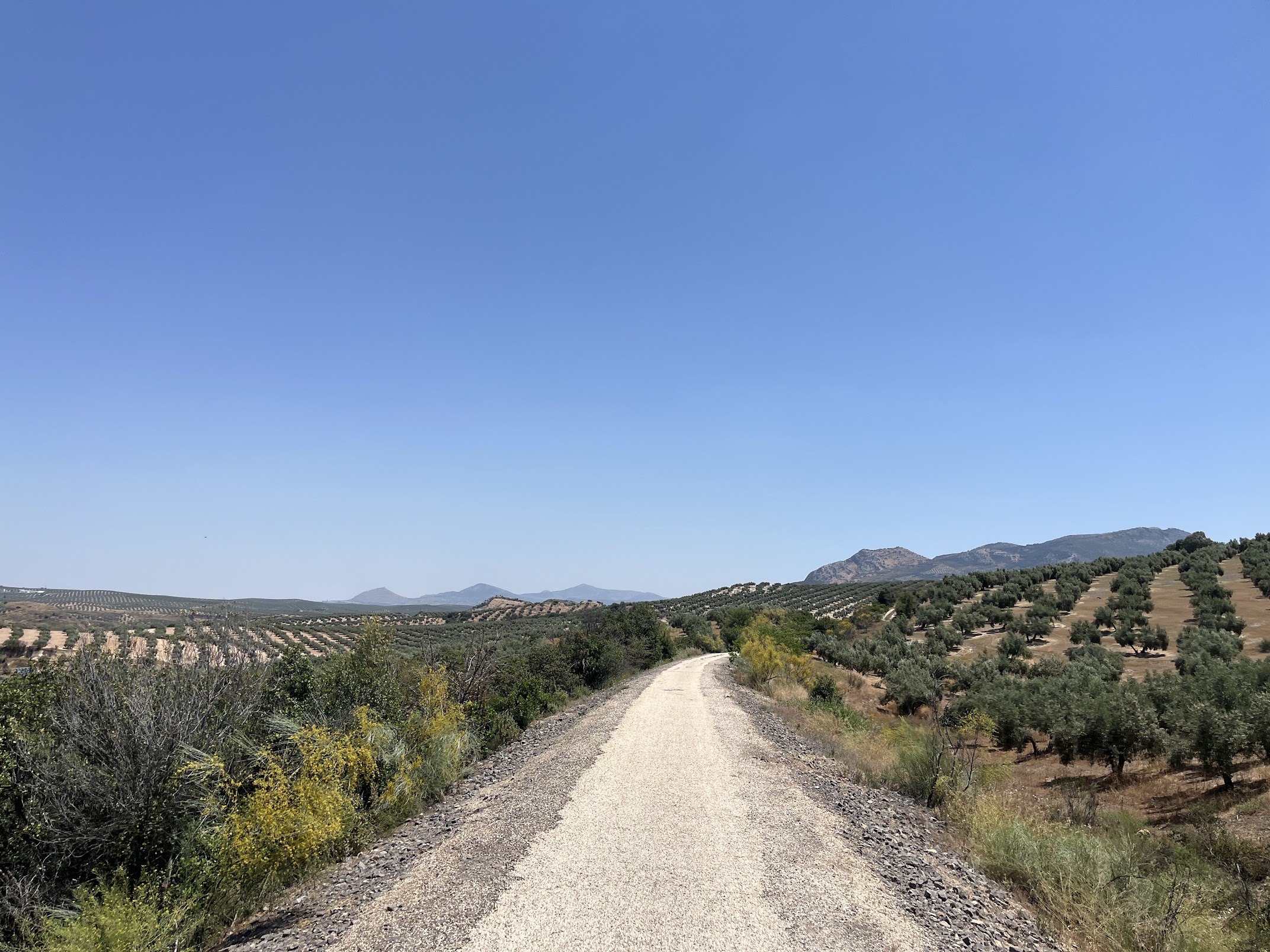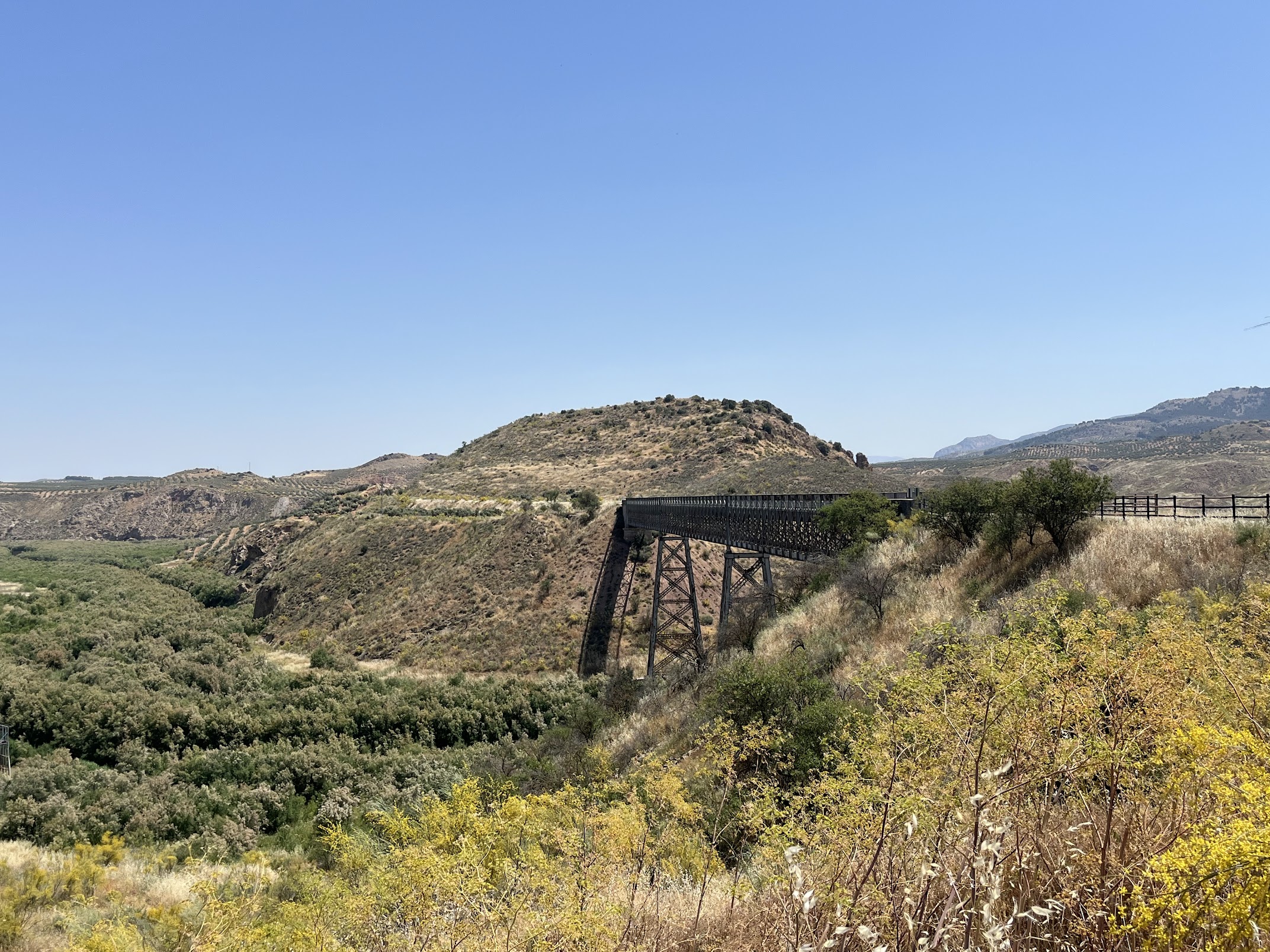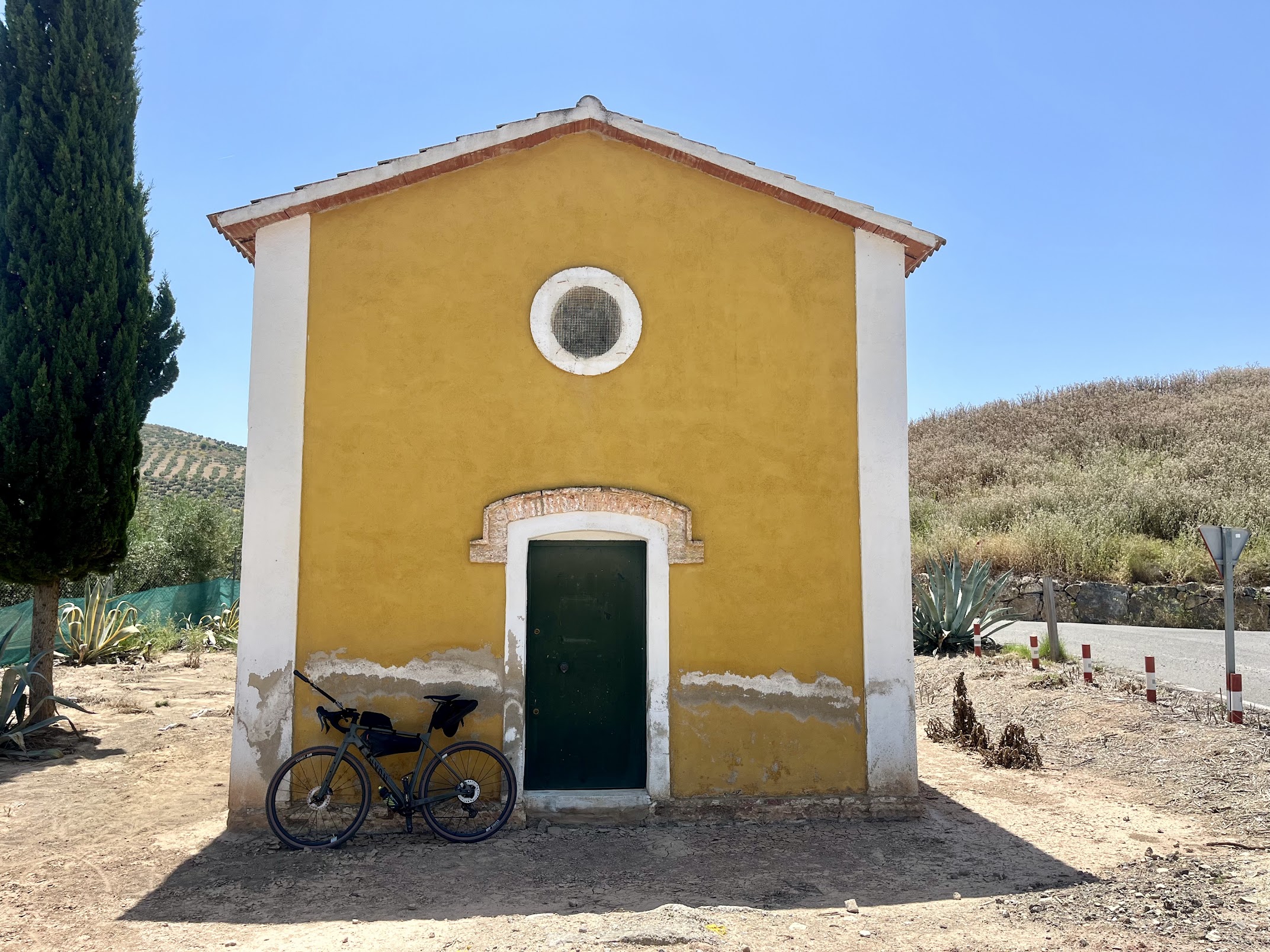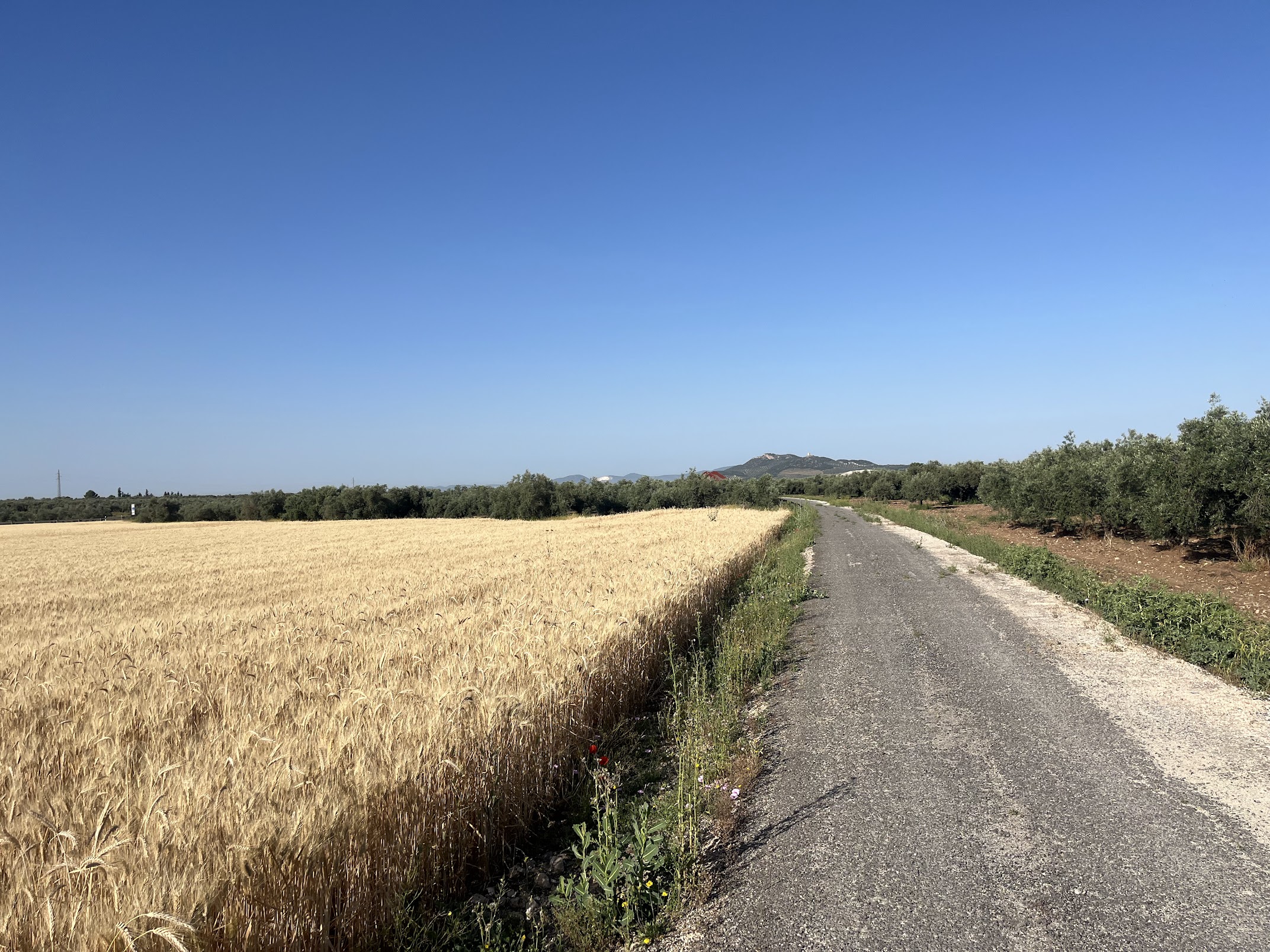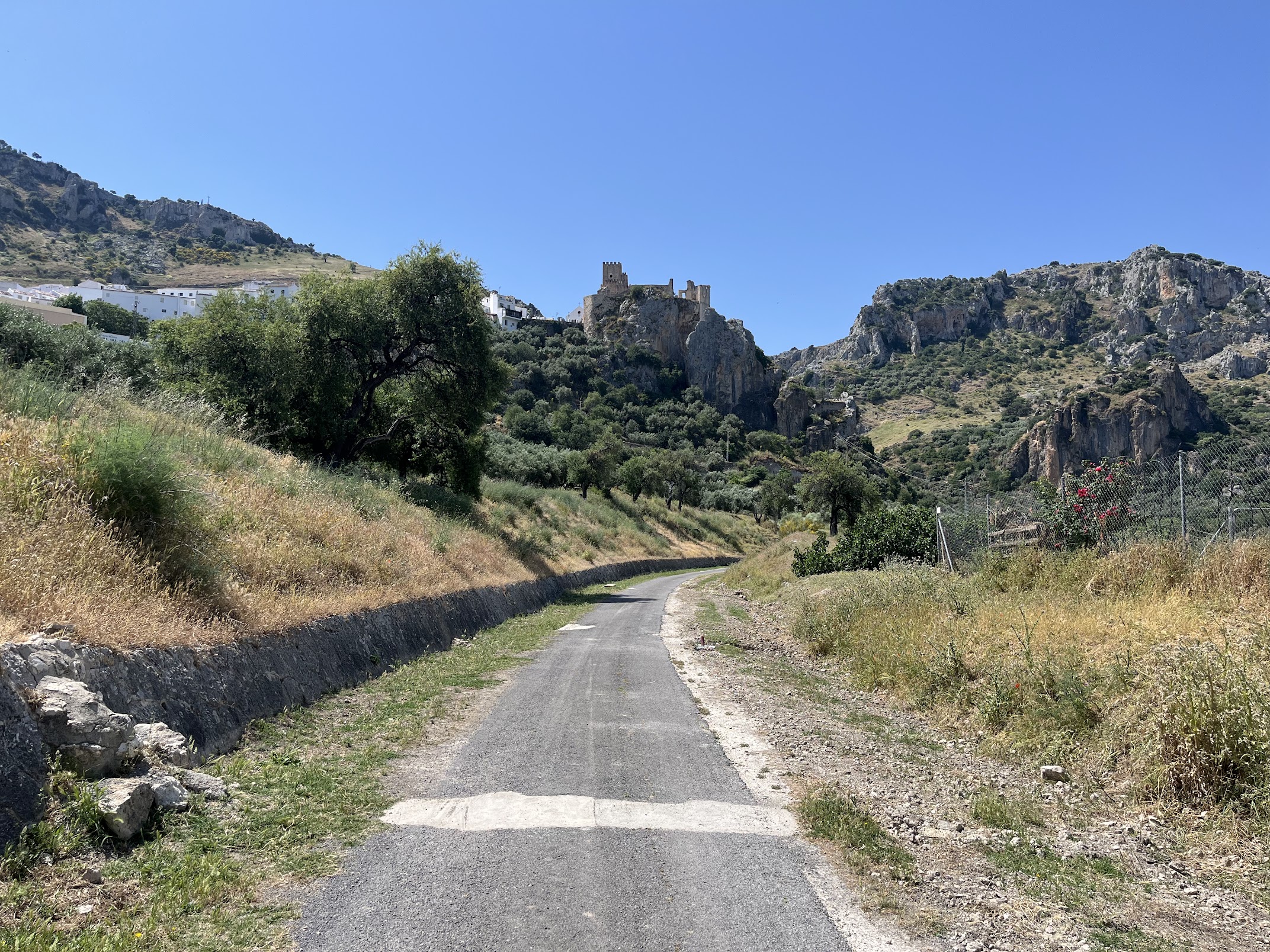Vía Verde del Aceite
The Vía Verde del Aceite (Olive Oil Greenway) is one of Spain’s finest long-distance gravel routes. It’s a 120 km car-free trail that follows the former railway line once used to transport olive oil through the heart of Andalucía.
This ride begins in Puente Genil, where the route gently climbs eastward toward Jaén.
TIP
This is the slightly more difficult direction, with more climbing than the other way around. If you’re doing the entire length of the Vía Verde and overnighting, I suggest starting in Puente Genil. If you’re only riding one way, I recommend beginning in fabulous Jaén.
After 2 kilometers on A roads, you quickly leave traffic behind and roll into a world of olive trees, tunnels, viaducts, and timeless Andalusian countryside. The gradient is consistently gentle — rarely more than 2% — thanks to the route’s railway origins, making it perfect for long, steady efforts.
The origins of the Vía Verde
At the end of the 19th century, train tracks were constructed to transport olive oil to the ports of Málaga and Algeciras. This being the world capital of olive oil, the railway was aptly named the Oil Train. Passengers were also transported, but with an average speed of just 30 km/h, it never became a popular means of travel.
As with many other abandoned railways, the rise of road transportation eventually led to its decline. Almost 100 years after construction, it was shut down and left to decay — until the early 2000s, when the brilliant idea of revitalizing old railways throughout Spain gave it a second life.
Spain’s peculiar relationship with rabbits
Due to a lack of preparation on my part, I was surprised to discover that nearly the entire ride is on tarmac. However, as you’d expect from a traffic-free road, it’s not in perfect condition everywhere, and there are a few gravel sections — so a gravel or mountain bike is recommended.
What I really wasn’t expecting was to see so many rabbits. I haven’t seen this many rabbits in all my years in Spain. Interestingly, this abundance of rabbits ties into the very name of Spain itself. When the Phoenicians arrived on the Iberian Peninsula (founding towns and cities like Cádiz, Málaga, and Almuñécar), they reportedly encountered so many rabbits that they called the land “I-Shaphan-im”, meaning “land of hyraxes”. They mistook these unfamiliar creatures for hyraxes from their own region. The name evolved through Latin as Hispania, which eventually became España, as we know it today. I never thought a bike ride would lead me to an etymology lesson!
A fight against the elements
Trains have no traction to speak of, so railway gradients are always very gentle. Too gentle, if you ask me. It doesn’t look like you’re going uphill, but you are. Constantly. I found it frustrating to ride 50 kilometers up at a steady 1–2% (sometimes spiking to a leg-breaking 3%), only to face another 25 kilometers of gentle climbing later in the day.
It wouldn’t have been so bad if it hadn’t been almost 40 degrees Celsius at the end of May. With barely any shade, the ride turned out to be far harder than expected. Take as many bidons as you can carry — you’re going to need them, especially since there aren’t many places to rest along the way. And when you do find a water fountain or café, make sure to top up your bottles.
The route
You can break the route down in many ways. Families with children might ride it over 4 or 5 days, while adventurers with heavy bikepacks might overnight somewhere in the middle. I did the entire route in one day, and here’s how I would divide it:
Section 1: Puente Genil
The start of the Vía Verde is 2 km outside the town of Puente Genil. Once you’re on the route, you’ll stay on it for the next 6 hours or so.
You begin climbing right away. In good spirits and excited about the adventure, you may be lulled into a false sense of confidence, surprised at how easy it all seems. Don’t be tempted to go fast — take it easy and enjoy the views. You’ll quickly pass through endless olive groves, with some picturesque vineyards and wheat fields along the way.
Section 2: Lucena - Cabra
It’s quite pleasant to ride through this section — until you get closer to Lucena. This is a larger town, and you’ll cross highways and pass by some run-down industrial areas.
Once out of Lucena, the landscape returns to its beautiful self. At kilometer 33, you enter another village: Cabra (which, amusingly, means “goat” in Spanish). Despite the funny name, this town has a rich history. But what will interest most cyclists is the old train station, which has been converted into a cafeteria.
Section 3: Cabra to Martos
Just outside Cabra, the most beautiful part of the Vía Verde begins. You’ll climb a little further before riding across a glorious plateau near the village of Doña Mencía.
Shortly after, you’ll reach the crown jewel of the route: Zuheros. This tiny village (population ~650) often appears in lists of Spain’s most beautiful places. It really is stunning, and hard to miss, with its castle perched dramatically above the town, visible from kilometers away. It’s absolutely worth a short detour.
A little further along is the station-turned-cafeteria in Luque. I highly recommend stopping here and filling up your bidons because there’s very little civilization for the next 40 km.
Riding here is pure joy. You’ll cross about a dozen Eiffel-esque metal railway bridges that tower over rivers, streams, the occasional highway, and the endless sea of olive trees. There are even some lagoons — most of which, sadly, have long since evaporated.
The spectacular bridge over the Guadajoz river marks the beginning of the second “climb” of the day: 30 kilometers of gentle uphill riding, all the way to Martos.
In Martos, the railway runs straight through the town rather than around it, so it’s easy to stop for a coffee. Martos is a major center for olive oil production — over 20 million liters annually!
Section 4: Martos to Jaén
The home stretch from Martos takes you past the towns of Torredonjimeno and Torredelcampo before arriving in beautiful Jaén. And just like that, 120 kilometers are behind you.
Time to relax, explore this fabulous city, and enjoy a well-earned beer, before getting an early night for your return ride to Puente Genil at dawn.
